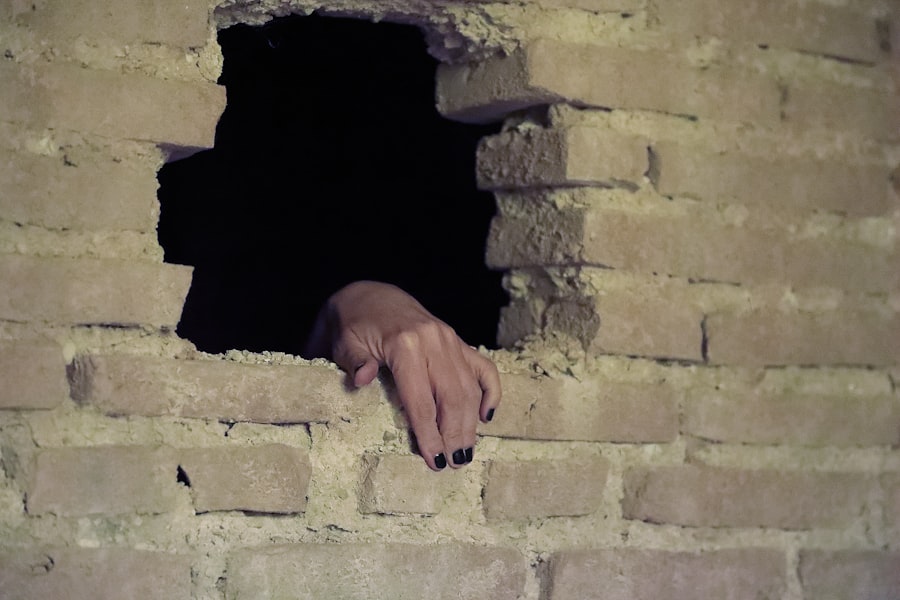The Dead Hand System, often shrouded in mystery and intrigue, represents one of the most chilling aspects of nuclear deterrence strategies. This automated system, designed to ensure a retaliatory strike in the event of a nuclear attack on a nation, raises profound questions about the intersection of technology, warfare, and human oversight. As nations grapple with the complexities of modern warfare, the Dead Hand System stands as a stark reminder of the lengths to which countries will go to protect their sovereignty and retaliate against existential threats.
Its very existence underscores the precarious balance of power in international relations, where the threat of total annihilation looms large. At its core, the Dead Hand System embodies a paradox: it is both a safeguard against nuclear aggression and a potential harbinger of catastrophic consequences. The notion that an automated system could make life-and-death decisions without human intervention is unsettling.
This article seeks to explore the origins, functionality, and implications of the Dead Hand System, shedding light on its role in contemporary geopolitics and the ethical dilemmas it presents.
Key Takeaways
- The Dead Hand System is a nuclear deterrence system developed by the Soviet Union during the Cold War.
- The system was designed to automatically launch nuclear missiles in the event of a decapitating strike on the Soviet leadership.
- The Dead Hand System is shrouded in secrecy and has been the subject of much speculation and debate.
- The documentary provides a comprehensive exploration of the Dead Hand System, including its history, functionality, and impact on international relations.
- Interviews with experts and insiders offer valuable insights into the ethical, moral, and potential risks associated with the Dead Hand System.
The History of the Dead Hand System
The origins of the Dead Hand System can be traced back to the Cold War era, a time characterized by intense rivalry between superpowers and an ever-present fear of nuclear conflict. In the wake of World War II, as tensions escalated between the United States and the Soviet Union, both nations sought to develop strategies that would deter potential attacks. The Soviet Union’s Dead Hand System emerged as a response to this climate of fear, designed to ensure that even in the event of a devastating first strike, a retaliatory response would be guaranteed.
The system was officially implemented in the late 1980s, during a period when the threat of nuclear war was at its peak. It was conceived as a fail-safe mechanism that would activate if communication with military leaders was severed, indicating that they may have been incapacitated or killed in an initial strike. This historical context highlights the lengths to which nations would go to maintain a credible deterrent, reflecting a broader strategy of mutually assured destruction that defined much of the Cold War.
The Functionality and Purpose of the Dead Hand System

The functionality of the Dead Hand System is both complex and chilling. At its core, it operates through a series of sensors and automated protocols designed to detect signs of a nuclear attack. If these sensors indicate that a strike has occurred and communication with military command is lost, the system can autonomously initiate a retaliatory strike against perceived aggressors.
This mechanism is intended to ensure that even if human decision-makers are incapacitated, the nation’s nuclear arsenal remains poised to respond. The purpose of such a system is multifaceted. Primarily, it serves as a deterrent against potential aggressors who might consider launching a nuclear attack.
Furthermore, it reflects a strategic commitment to maintaining national security in an increasingly unpredictable global landscape. However, this reliance on automation raises critical questions about accountability and control in warfare.
The Documentary: A Deep Dive into the Dead Hand System
| Metrics | Data |
|---|---|
| Release Date | June 2021 |
| Duration | 90 minutes |
| Viewership | Over 1 million |
| Topics Covered | Dead Hand System, Cold War, Nuclear Weapons |
| Interviewees | Experts, Historians, Survivors |
A recent documentary exploring the Dead Hand System has brought renewed attention to this controversial topic. Through interviews with military experts, historians, and former officials, the film delves into the intricacies of how the system operates and its implications for global security. Viewers are taken on a journey through the Cold War era, examining how fear and paranoia shaped military strategies and led to the development of such automated systems.
The documentary also highlights personal stories from those who were involved in its creation and implementation. Their insights provide a unique perspective on the moral dilemmas faced by military leaders during this tumultuous period. By juxtaposing historical footage with contemporary analysis, the film effectively illustrates how the legacy of the Dead Hand System continues to influence modern military doctrine and international relations.
Interviews with Experts and Insiders
In an effort to gain deeper insights into the Dead Hand System, interviews with experts and insiders reveal a range of perspectives on its efficacy and ethical implications. Military strategists emphasize that while such systems are designed to enhance national security, they also introduce significant risks. The potential for malfunction or misinterpretation of data could lead to unintended consequences, including accidental nuclear war.
Conversely, some insiders argue that the existence of such systems is essential for maintaining deterrence in an increasingly volatile world. They contend that without mechanisms like the Dead Hand System, nations may be more inclined to engage in aggressive posturing or even preemptive strikes. These interviews underscore the complexity of balancing security needs with ethical considerations in an age where technology plays an ever-increasing role in warfare.
The Impact of the Dead Hand System on International Relations

The Dead Hand System has had profound implications for international relations since its inception. By establishing a framework for assured retaliation, it has contributed to a delicate balance of power among nuclear-armed states. The knowledge that any nuclear attack could trigger an automatic response has deterred many nations from engaging in overt aggression against one another.
However, this balance is precarious. As new players enter the nuclear arena and geopolitical tensions rise, the potential for miscalculation increases. The existence of automated systems like the Dead Hand can lead to an arms race as nations seek to develop countermeasures or enhance their own deterrent capabilities.
This dynamic complicates diplomatic efforts aimed at reducing nuclear arsenals and fostering cooperation among nations.
The Ethical and Moral Implications of the Dead Hand System
The ethical and moral implications surrounding the Dead Hand System are profound and troubling. At its core lies the question of whether it is acceptable for machines to make life-and-death decisions without human oversight. Critics argue that delegating such critical choices to an automated system undermines accountability and erodes moral responsibility in warfare.
Moreover, there are concerns about the potential for errors or malfunctions within these systems. The prospect of an accidental launch due to technical failure or misinterpretation of data raises significant ethical dilemmas about trust in technology versus human judgment. As nations continue to rely on automated systems for national defense, these moral questions will only become more pressing.
The Potential Risks and Dangers of the Dead Hand System
While designed as a deterrent, the Dead Hand System carries inherent risks that cannot be overlooked. One major concern is the possibility of false positives—situations where sensors mistakenly detect an attack when none has occurred. Such errors could lead to catastrophic consequences if an automated response is triggered without justification.
Additionally, there is a risk that adversaries may attempt to exploit vulnerabilities within these systems. Cybersecurity threats pose significant challenges as nations increasingly rely on technology for their defense strategies. A successful cyberattack could disable or manipulate a nation’s automated response systems, leading to unintended escalation or conflict.
Comparisons to Other Nuclear Doomsday Devices
The Dead Hand System is not alone in its role as a nuclear deterrent; it exists alongside other doomsday devices designed to ensure retaliation in case of an attack. For instance, systems like the U.S.’s “Launch on Warning” policy also embody similar principles but differ in execution and reliance on human decision-making. Comparing these systems reveals varying philosophies regarding nuclear deterrence.
While some emphasize immediate human control over responses, others lean towards automation as a means of ensuring swift retaliation. Each approach carries its own set of risks and benefits, contributing to ongoing debates about how best to manage nuclear arsenals in an increasingly complex global landscape.
The Future of the Dead Hand System
As technology continues to evolve at an unprecedented pace, questions about the future of the Dead Hand System loom large. Advances in artificial intelligence and machine learning may enhance its capabilities but also raise new ethical dilemmas regarding autonomy in warfare. The potential for fully autonomous weapons systems could blur lines between human decision-making and machine-driven responses.
Moreover, international efforts toward arms control and disarmament may influence how such systems are perceived and utilized moving forward. As nations engage in dialogue about reducing nuclear arsenals, there may be calls for greater transparency regarding automated systems like the Dead Hand. The future will likely involve navigating these complex dynamics while addressing both security needs and ethical considerations.
The Ongoing Relevance of the Dead Hand System
In conclusion, the Dead Hand System remains a relevant and contentious topic within discussions about nuclear strategy and international relations. Its historical roots reflect a time when fear dictated military policy, while its functionality raises critical questions about automation’s role in warfare today. As nations continue to grapple with evolving threats and technological advancements, understanding systems like the Dead Hand will be essential for navigating future challenges.
The ethical implications surrounding such systems cannot be ignored; they compel society to confront uncomfortable truths about accountability and responsibility in warfare. As long as nuclear weapons exist, so too will debates about how best to manage their use—and whether automated systems like the Dead Hand should play a role in that management. Ultimately, this ongoing discourse will shape not only national security policies but also humanity’s collective approach to peace and conflict resolution in an increasingly uncertain world.
In exploring the chilling realities of Russia’s Dead Hand system, a documentary that delves into the automated nuclear defense mechanism, it’s essential to consider the broader implications of such military strategies. An insightful article that complements this documentary can be found on HeyDidYouKnowThis, which provides a deeper understanding of the historical and strategic context of nuclear deterrence. For further reading, you can visit the article by clicking on this link. This resource offers a comprehensive look at how these systems have shaped global military policies and the ongoing debates surrounding their existence.
WATCH THIS! The Nuclear Doomsday Machine Russia Built That Runs Itself
FAQs
What is the Dead Hand system in Russia?
The Dead Hand system, also known as Perimeter, is a Cold War-era automatic nuclear weapons control system developed by the Soviet Union. It was designed to ensure a retaliatory strike against the United States in the event of a devastating nuclear attack on the Soviet Union, even if the Soviet leadership was incapacitated.
How does the Dead Hand system work?
The Dead Hand system is designed to automatically launch nuclear missiles if it detects signs of a nuclear attack on the Soviet Union, such as a sudden loss of communication with top military and political leadership. It relies on a network of sensors and communication systems to detect and assess the threat, and can initiate a retaliatory strike without human intervention.
Is the Dead Hand system still active in Russia?
While the exact status of the Dead Hand system is classified, it is widely believed that a similar system is still in place in Russia today. The Russian government has never officially confirmed the existence or status of the Dead Hand system.
Are there any documentaries about the Dead Hand system in Russia?
Yes, there are several documentaries that explore the history and implications of the Dead Hand system in Russia. These documentaries often feature interviews with experts and former military personnel, and provide insights into the Cold War-era nuclear strategy of the Soviet Union.
